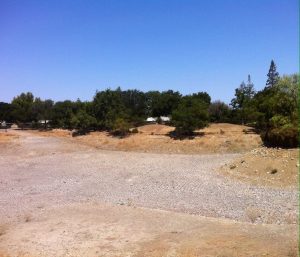
Photo by Aditi Desai.
That challenge that spams the social media. That challenge that saves lives. That challenge that takes place during the nation’s worst drought in recorded history.
The ALS Ice Bucket Challenge has received a great deal of attention over the past couple months. The ongoing drought in California has led to controversy over whether the challenge is wasteful.
The challenge is completed as follows: people post videos of pouring a bucket of ice water and challenge their friends to do the same; those unable to complete the challenge must donate to the ALS foundation.
As unusual as this challenge sounds, it has proven extremely successful . According to the ALS Association, the ALS foundation raised more than $20 million during the ice bucket challenge season. This foundation fights to bring awareness and raise money for Amyotrophic Lateral Sclerosis, commonly known as Lou Gehrig’s disease. This disease controls the part of the brain that deals with muscle motion and damages the nerve cells in the spinal cord and brain.
The downside of this ice bucket challenge, often argued upon, is its timing with the drought. However, the drought is not heavily impacted by the challenge.
A drought is however, majorly impacted by weather fluctuations in wind patterns. During droughts, the higher temperature and desert areas will receive lower amounts of water because of the wind pattern in addition to the process of desertification, another word for “growing deserts”. The impact of a higher drought in one area can harm the environment of neighboring communities.
California is amid one of its worst droughts. Some scientists even speculate that quite a few communities will run out of water in the next two to four months. California officials are even thinking about possible penalties to anyone who participated in the challenge.
Junior Nandita Somayaji believes that the continuation of the challenge has a minimal effect, and that it is an effective way to spread word about the disease.
“When I was doing [the challenge], it wasn’t that popular,” Somayaji said. “But I’m sure that if this fad isn’t blown up too big, this will not leave such a huge footprint”.
Other students take opposing viewpoints.
Junior Ajay Merchia strongly opposes the ice bucket challenge because of the dissipation of water in California’s reservoirs. He also stated that communities cannot afford to allow this water to keep getting lost.
“I for one do not like to go to Memorial Park and and see that half of the field is dead, rather something that I can enjoy,” said Merchia.
However, an average family living in California will use about 400 gallons of water each day.The amount of water used for the ice bucket challenge varies from two to four gallons which equates to only a one percent increase in total water usage by family.
According to environmental science teacher Andrew Goldenkranz, participating in the ice bucket challenge has a minimal effect on the drought and uses a scarce amount of water compared to other systems. Most of the drought occurs because of natural patterns in the weather and ecosystem.
“There is a fixed amount of water on this planet,”said Goldenkranz. “The planet will survive the drought, it’s only the question of how the people will [handle the supplies].”







